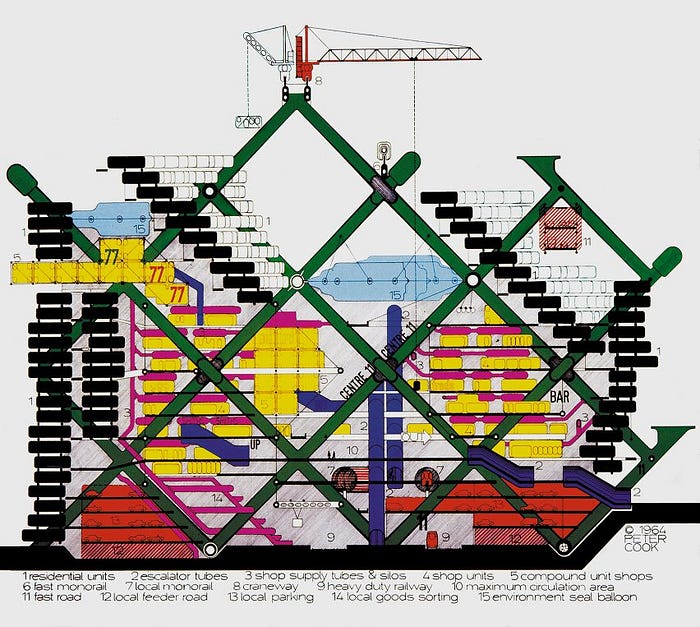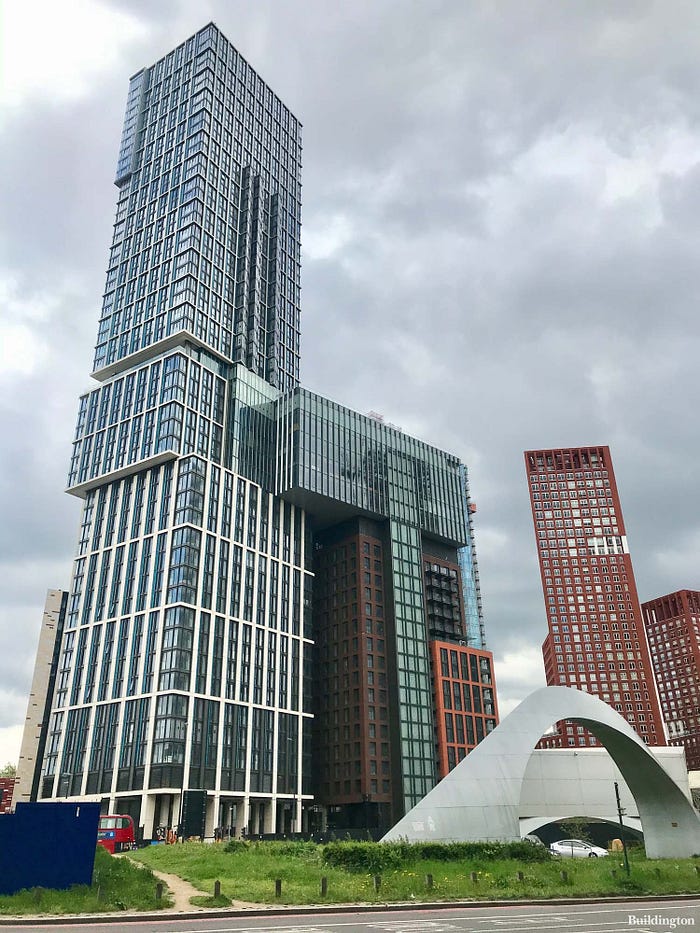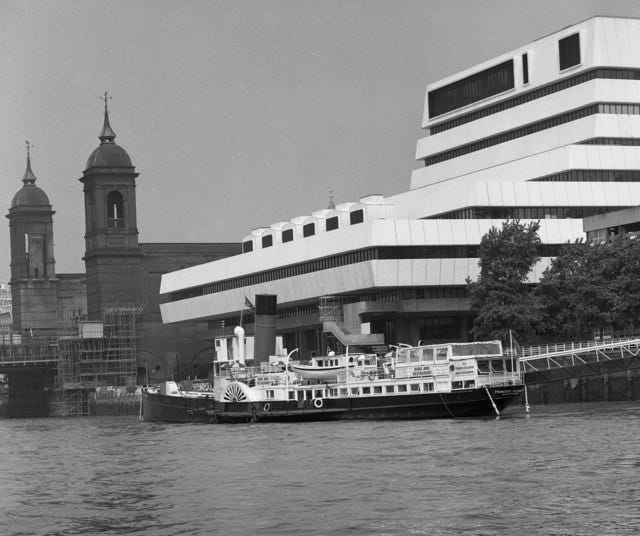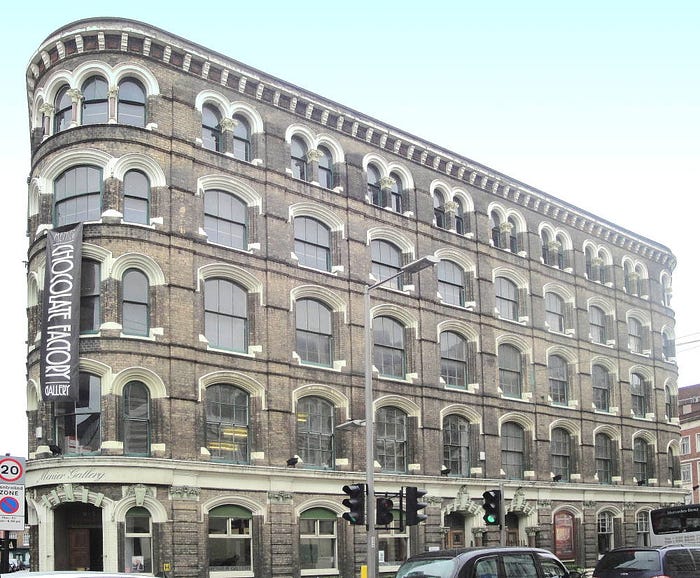Modern Architecture is Killing the Planet.
Problem: Architecture as Fashion is Not Sustainable
In the 1960s an avant-garde group of architects imagined Plug in City, a utopian vision of the future, where buildings had become uber-disposable, and prefabricated housing components would be swapped in and out of a giant megastructure, as easily as we change our fashion accessories.

Now, regrettably, this utopian vision has became a dystopian reality. Where buildings used to last hundreds of years, many new buildings now require significant maintenance, or even reach complete obsolescence within fifteen.
This is a Huge Problem for the environment and the planet.
Switching from wood, bricks, and stone, to concrete, composites, and plastics is a big part of the issue, as these new ‘low maintenance’ components often really mean ‘un-maintainable’ and so become destined for landfill. For example, while a wooden sash window will need regular repainting it can last hundreds of years, but a plastic window once damaged will need to be completely thrown away.
While Modern Architecture’s materials and construction parts are certainly less sustainable, I think the key problem is actually the ideology underpinning it.
Architects no longer aim to design ‘beautiful’ buildings. Indeed they shun beauty, arguing that its subjective, not intrinsically derived from nature’s harmonies. They argue that a building’s form should follow its function, that ornamentation is superfluous, and dishonest.
When they find themselves bored by the dullness of a sheer glass and concrete façade of a pastiche Minimalism, they turn to irregular, incoherent, asymmetric shapes, or uncomfortable cantilevers.
They claim their brief is to shock with ‘originality’ or to ‘challenge’ the public.
The results are anti-human buildings that do not ‘spark joy’.
Indeed studies show Modern Architecture negatively effects the mental health of people who have to live nearby to it.

Functions and fashions change.
A building designed first to be timelessly beautiful, with function following, will be a building that in time is adapted to suit a different occupier’s function.
A building designed with utility first, and form second, will not charm its future occupiers into repurposing it when its original function comes to an end. Because they were designed to look cool and original, their aesthetics will go out of fashion as quickly as they came into fashion.
Modernist buildings tend to get knocked down when their original function changes rather than being saved and repurposed.
Rebuilding because of ugliness is environmentally wasteful.

Solution: Aspire To Build Buildings that Could Last Forever
Contrast this with many of the buildings pre-modernism.
Because they were designed to be beautiful, even modest terraced Georgian and Victorian houses are kept, converted into offices, back to houses, and their ground floors may also have been converted to retail and back again.
Many of the warehouses of this era were perfectly functional, but they were also designed of a timeless style, rooted in the classical or the vernacular which recognized beauty. Back then Architects were not embarrassed by the word ‘beauty’. As a result, these buildings have been repurposed many times over into new uses. Very sustainable!

In Alcantara, Spain, there's a stone bridge built by the Ancient Romans, thousands of years ago, under which its architect, Caius Julius Lacer, engraved:
“This bridge will last for all time”.
As we walk around the newly built areas of any of our cities, it seems that no-one shares Lacer’s bold ambition anymore.
Yes, we should use more natural locally sourced materials and traditional construction techniques that won’t end up in landfill.
But this isn’t enough.
Because if our fashionable design ends up becoming a temporary building when the next generation find it ugly, then we cannot offset the cycle of destruction we’ve started with ‘a bit more insulation’.
Summary
When judging the sustainability of a building, I suggest far greater weight needs to be given to:
1: How likely is it that the materials will last 1,000 years+, but even more importantly;
2: How likely is it that people will even want the building to last 1,000 years+.
Modern Architecture, tends to fail very badly on both these criteria, but particularly the second.
We must rediscover traditional construction materials and techniques, but also the timeless, classical and vernacular aesthetics that future generations will also love and want to keep.
If we want to Save The Planet, we need to raise our aspirations and design buildings that could last forever.
P.S. It’s not that we can’t afford to build beautiful buildings anymore, it’s ideological. Whether Modernism is of the bland/minimalist variant or of the bizarre/unusual variant, it tends to actually cost more to come up with designs this bad:

H/T to ‘WrathofGnon’ and Michael Saylor in particular.
